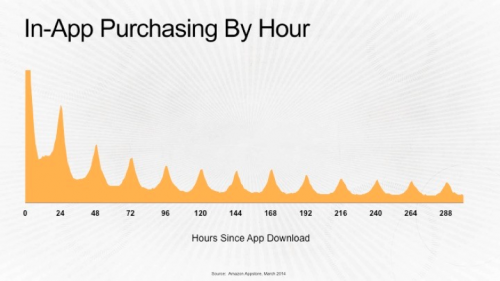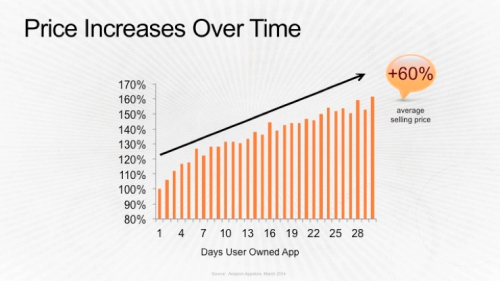Yesterday the publication “F2P: when do players spend money?”. Unfortunately, several semantic errors have crept into it. We apologize and publish a new, corrected version of the material.

A few days ago, a curious article by Ankur Prasad, who is responsible for developer relations at Amazon, appeared on the pages of the Chartboost grid blog.
Ankur and his colleagues pulled off the following experiment: they compared content sales among the top 50 games with similar titles outside the top. Then we found common monetization solutions among the top titles.
Based on the information they received, they made two interesting graphs.
The first one is called “Distribution of gaming payments by the hour”. The essence of the graph is that it displays the activity of paying users over time. It shows that a lot of players make a payment in the first 24 hours of their game.

By the way, this is well known to everyone. Therefore, many companies strive in their games to make sure that the incoming player pays immediately. In other words, they work more on monetization, not on retention.
But here’s what Amazon found: despite the fact that a significant part of purchases are made by players on the first day, the amount received on that day (i.e., the amount received for the entire period of operation of the game from users who paid in the first 24 hours of their presence in the product), on average, answers no more than, less than 18% of all earnings. The game earns the remaining 82% of the money on the remaining days of user presence.
Considering that 80% of players do not log into the game after the first session (and 80% of active users lose the game on day 7), it is not surprising that many cannot earn money on the mobile market.
We’re moving on. 74% of the game’s revenue remains after the first seven days (i.e., the game receives 26% of revenue from players who spent on the project in their first seven days of play), 54% of revenue remains outside the 30-day retention frame.
Conclusion? Do not think that hard milking players in the first day is the only way to make money on free-to-play.
The second graph is even more interesting. It is called quite obviously – “The price increases over time.” It’s not hard to guess that he demonstrates the following observation: the longer the user is in the game, the more they are willing to pay in the game.

The average user who has been playing for 30 days now usually spends 60% more money on content than the average user of the first day.
Conclusion? Rotate the game content at a cost depending on the user’s loyalty.
A source: https://www.chartboost.com
